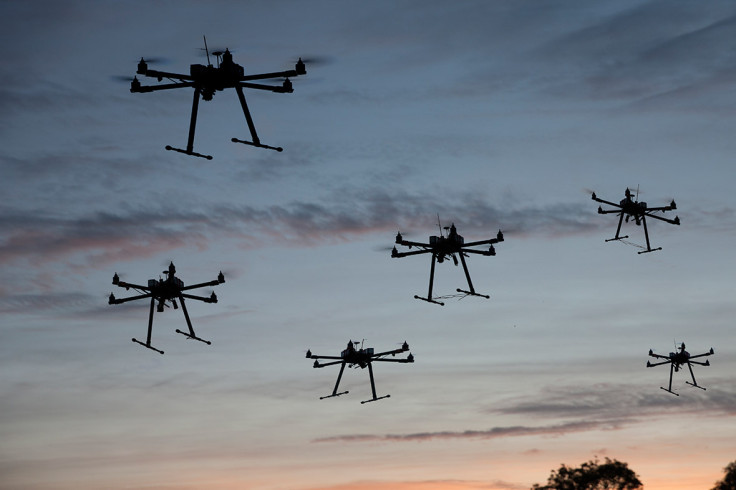FAA fears 1 million Americans will receive drones for Christmas and use them unwisely

The Federal Aviation Administration (FAA) says that up to a million new consumer drones could be sold this Christmas, and it is terrified of what civilians with no air safety knowledge might do with them. Rich Swayze, the FAA's Assistant Administrator for Policy, International Affairs, and Environment told the Airlines for America (A4A) Commercial Aviation Industry Summit in Washington on 28 September that the state agency is rushing to implement a consumer education campaign before the holiday season begins in earnest.
"We're trying to get out and educate people about potential dangers," he told delegates, according to Aviation Week. "A lot of people who don't have a pilot background are operating these things in the airspace."
US retail giant Walmart is currently selling 19 different unmanned aerial vehicles (UAV) that range in price from $19.99 to $274.95 (£13.19 - £181.47), and the FAA will be sending a representative to a pre-Christmas staff meeting to educate salespeople on what they need to tell customers about the safe operation of drones.
Rise in civilian drone incidents
There has been a rise in civilian incidents relating to consumer drones around the world in 2015, although thankfully the misuse of a drone has not yet caused any serious injuries or deaths.
There have been several incidents in the US, UK and around Europe where consumer UAVs have almost collided with passenger airplanes, not to mention drones crashing into buildings during public outdoor events and lightly injuring onlookers, as well as UAVs interfering with police investigations and preventing helicopters from putting out wildfires.
Criminals are also using drones as a novel way to get drugs and contraband into prisons, as well as a way to remotely scout for insecure properties to burgle. And in Washington DC, UAVs are now banned from being flown at all, after a drunk man crashed a UAV onto the lawn of the White House.
"From an operating perspective, [small UAVs are] a very serious issue and there's considerable concern that it's going to end in tears...It's not just in and around airports where drones present a danger to the travelling public. There are many areas outside of 5 miles of an airport where a drone conflict could occur," Hawaiian Airlines CEO Mark Dunkerley said at the conference.
Not enough clarity on drone regulations
Currently there is not enough information being given to the general public in many countries about where drones can and cannot be flown.
The FAA's official proposed drone rules from February state that UAVs weighing up to 55lb (24kg) can be flown during daylight hours, as long as they stay within the line of sight of the drone operator. The drones must stay below 500ft in the air and fly at a speed of less than 100mph.
While it sounds simple enough to just keep the drone flying at a low altitude so that it won't be able to hit anything, the reality is that the different classes of airspace are much more complicated to understand.
For example, Class B airspace, which is from ground level to 10,000ft, must be kept clear as these areas are directly in the path of commercial aircraft flights. But if you're not in the aerospace industry, you might not know that.
To clarify matters in the UK, its Civil Aviation Authority has advised the general public that they cannot fly drones within cities or towns, and that they must find clear, wide green spaces that are at least 50m away from people, vehicles, buildings or structures.
© Copyright IBTimes 2025. All rights reserved.






















